I've decided to programmatically create my own UITableView separator lines because I need fine control over displaying a separator above and/or below each individual UITableViewCell. My tableView has static cells, so I do not create the separators in cellForRowAtIndexPath. Instead, I have propertys for each cell and in viewDidLoad, I add a top and/or bottom separator as needed. It's working, until I rotate to landscape and then the separator line does not stretch to fill the screen - it of course remains the same width it was when created. I'm not seeing how I can automatically adjust them to fit the width of the screen.
I tried adding Auto Layout constraints (leading, trailing, top/bottom), but for some reason it's not working - the width does not change, but there are no error messages logged to indicate anything is wrong with the constraints. The separator lines also sometimes disappear upon scroll or rotate, and if I comment out the auto layout constraints then they do not disappear.
So how can I make my custom cell separators always stretch to fill the device width upon rotation, and how do I prevent them from disappearing?
If it would be easier/better to create my custom cell separators in a different way, I am willing to do that. I just don't know how this can be done aside from my approach when the cells are static. I considered creating the views in the Storyboard, and setting up the constraints visually, but would that not be the equivalent of what I'm doing programmatically? If they were dynamic cells I would do it in cellForRowAtIndexPath.
//In viewDidLoad:
[self addTopSeparatorForCell:self.myCell];
//Helper method
- (void)addTopSeparatorForCell:(UITableViewCell *)cell {
UIView *topSeparator = [[UIView alloc] initWithFrame:CGRectMake(15, 1, cell.contentView.frame.size.width, 0.5)];
//add CALayer to preserve line separator visibility when row is highlighted
CALayer *backgroundColorLayer = [CALayer layer];
backgroundColorLayer.frame = topSeparator.bounds;
backgroundColorLayer.backgroundColor = [UIColor colorWithWhite:204/255.0f alpha:1].CGColor;
[topSeparator.layer addSublayer:backgroundColorLayer];
[cell.contentView addSubview:topSeparator];
//add auto layout constraints
topSeparator.translatesAutoresizingMaskIntoConstraints = NO;
NSLayoutConstraint *cn = nil;
cn = [NSLayoutConstraint constraintWithItem:topSeparator
attribute:NSLayoutAttributeLeading
relatedBy:NSLayoutRelationEqual
toItem:cell.contentView
attribute:NSLayoutAttributeLeading
multiplier:1.0
constant:15];
[cell.contentView addConstraint:cn];
cn = [NSLayoutConstraint constraintWithItem:topSeparator
attribute:NSLayoutAttributeTrailing
relatedBy:NSLayoutRelationEqual
toItem:cell.contentView
attribute:NSLayoutAttributeTrailing
multiplier:1.0
constant:0];
[cell.contentView addConstraint:cn];
cn = [NSLayoutConstraint constraintWithItem:topSeparator
attribute:NSLayoutAttributeTop
relatedBy:NSLayoutRelationEqual
toItem:cell.contentView
attribute:NSLayoutAttributeTop
multiplier:1.0
constant:1];
[cell.contentView addConstraint:cn];
}

EDIT: Thanks to @ user1966109, we've been able to solve the issue with the lines not extending to fill the width, and now they are preserved when highlighting a cell. But one issue still remains that I haven't been able to solve, since I'm not sure why it's occurring. The separator lines disappear after scrolling down the scrolling back up. It's related to the auto layout constraints though because a previous solution which had other issues did not exhibit this problem. Here's the current solution that causes the lines to disappear. I'd appreciate it if someone knows how to prevent this problem (and preserve the other issues already resolved).
[self.cell addConstraints:[NSLayoutConstraint constraintsWithVisualFormat:@"H:|-(15@750)-[myView]-(-47@750)-|" options:0 metrics:0 views:viewsDictionary]];
[self.cell addConstraints:[NSLayoutConstraint constraintsWithVisualFormat:@"V:[myView(2)]-(-2@750)-|" options:0 metrics:0 views:viewsDictionary]];